Japan Heritage: The Certification Story
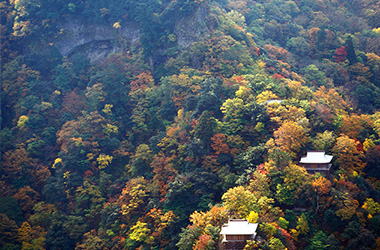 Mt. Mitoku
Mt. Mitoku
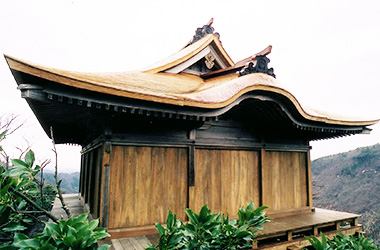 Sanbutsu-ji Monzyudou
Sanbutsu-ji Monzyudou
In the old Hoki province, bordering Izumo and Inaba - the homes of the gods, rises Mt. Mitoku, sacred land of the Shugendo sect.
It is said that the origin of the mountain can be traced back to En no Ozuno, the founder of Shugendo. Tradition has it that he threw three lotus petals into the air and asked that they land on sacred Buddhist places. One of the petals fell on Mt. Mitoku in the Hoki region, and it thus became a holy site of Shugendo. This story has been passed down to this day as "the legend of the lotus petals".
The Buddhist monk Jikaku Daishi then erected a temple at the base of the mountain. The temple was enshrined with images of three holy figures: Shakyamuni (the historical Buddha), Amithaba, and the Dainichi Buddha. The temple, known as Sanbutsu-ji, prospered as a dojo of the Tendai sect.
There are three main paths to the sacred mountain.
The eastern path starts in Inaba, the southern route starts in Mimasaka, and the western path comes from Izumo.
The intimate relationship between Mt. Mitoku and hot springs can be seen in the hot springs found along each of the routes. The road from Izumo in particular, which passes through Misasa Onsen and is the route up Mt. Mitoku, has historically been the most frequently used of the pilgrimage routes.
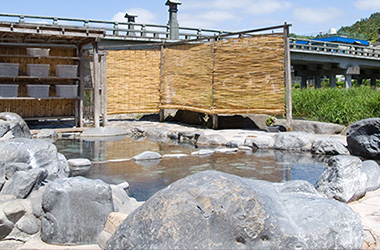 Misasa Onsen
Misasa Onsen
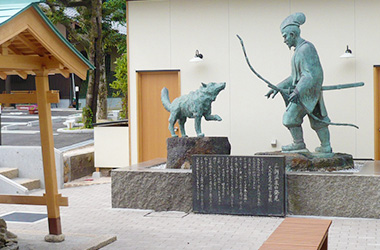 Kabu-yu
Kabu-yu
According to the "legend of the white wolf",
when Okubo Samanosuke, a retainer of Minamoto Yoshitomo, was making a pilgrimage to Mt. Mitoku to pray for the recovery of his lord, he came across an old white wolf under a camphor tree.
Thinking that since he was on a pilgrimage, it would be wrong of him to take a life, Samanosuke let the wolf escape. That night, he was visited by the Myoken Bodhisattva in his dreams. In appreciation of his act of kindness, the Bodhisattva told Samanosuke of the source of a hot spring "There is a spring under that tree, the waters of which will heal people's illnesses."
Since that time, the waters of Kabu-yu have been known for their efficacy in healing all kinds of ailments.
However, after a god dedicated to Kabu-yu fell into the waters, and a succession of people who took a bath there subsequently fainted or came down with a high fever, it was feared that the waters had been contaminated with evil spirits. It is said that Yakushi Nyorai (also known as Bhaisajyaguru and commonly referred to as the medicine Buddha) pacified the spirits at Mt. Mitoku and contained them in a wooden statue.
Yakushi Nyorai was made the protector of Misasa Onsen, and subsequently the waters became renowned as healing waters, with a stream of visitors coming to take advantage of their recuperative powers.
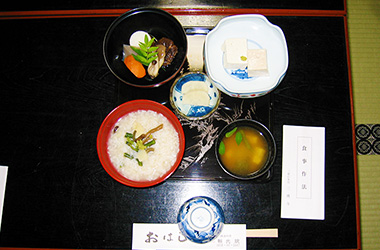 Buddhist vegetarian dining and Mitoku tofu
Buddhist vegetarian dining and Mitoku tofu
This story and Mt. Mitoku are strongly connected.
It is said that the six roots of perception - sight, hearing, smell, taste, touch, and awareness - can be purified at Mt. Mitoku. The purification process begins at Misasa Onsen, with a bath in the hot springs. Here the body is cleansed and relaxed and the spirit readied in preparation for the climb up Mt. Mitoku the next day.
Along the way, statues to the Jizo Bodhisattva line the route. Pilgrims offer their prayers to the Kannon Bodhisattva (Avalokitesvara) at Tsujido as they set off for Mt. Mitoku.
The north face of Mt. Mitoku was called kitaza (literally "north seat") and the south face minamiza ("south seat").
At the temple on the north face, the monks live on the mountain. In the temple, devotees use statues of the Buddha, sutras, chanting, zazen meditation, and other means to break their desires and confusion, purify body and spirit, and deepen the six roots of perception.
Moreover, in Shugendo, the mountains carry meaning, and practitioners train and test themselves by living, eating, and sleeping in mountain caves and overhangs.
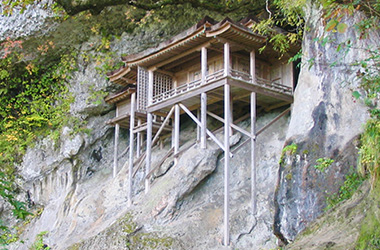 Sanbutsu-ji Temple (Nageiredo)
Sanbutsu-ji Temple (Nageiredo)
Even today, it is possible to get a glimpse of the "way of the ascetics" of Shugendo.
The way of the ascetics starts with a crossing of the shikuibashi bridge, and proceeds up votive stone steps past slopes lined with katsura trees and beech forests, unchanged for thousands of years. Then, after crawling up over the Umanose/Ushinose ("horseback ridge") and past the Monjudo and Jizodo temples, the Nageiredo temple, a designated National Treasure, suddenly appears before you on the face of a cliff...
Even today, following this "way of the ascetics" allows one to feel the unity of the human and natural worlds and imbibe the power nature.
On the other hand, the south face of Mt. Mitoku (Minamiza), speaks to us of the fact that this mountain was once a holy place of Shugendo. Here, in this place that even the locals rarely visit, the old stoneworks and graves of the old ascetics and hermits can still be seen.
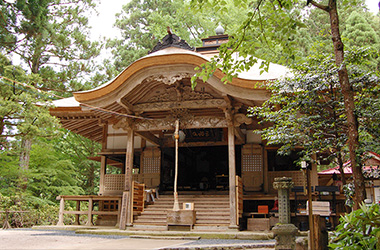 Sanbutsu-ji Hondo
Sanbutsu-ji Hondo
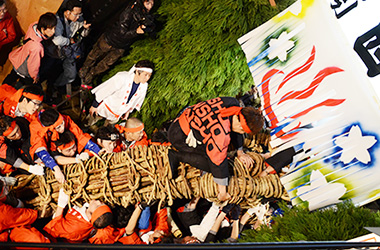 Jinsho tug-of-war
Jinsho tug-of-war
After performing the rituals and following the sacred practices laid down by their predecessors and purifying the six roots of perception, Shugendo devotees descend from the mountain. In Misasa Onsen, practitioners can heal their senses by drinking the waters, soaking in a hot bath, or walking amongst the rising steam to fully immerse themselves in the power and blessings of nature.
This is called the "healing of the six senses".
The following story illustrates the meaning of the "healing of the six senses". It is said that there was a person who visited the hot spring day after day in the hope of curing their blindness. They built stone steps as per the Shugendo ritual and bathed in the hot waters to cleanse their body. One morning, the pilgrim awoke to see three holy Buddhas together with the rising sun and found that their wish had been granted. This story shows the origin of the "prayer in stone steps".
Additionally, experiences such as performing the Misasa Jinsho tug-of-war (made with katsura trees cut from the Mt. Mitoku region), listening to the calls of the river sculpin in the pure waters of the Mitoku River, or watching the steam rise from the waters of the river will soothe your heart and soul and heal the six senses.
Concept
Place of purification of the six roots of perception and healing of the six senses
Visit Japan's most dangerous national treasure, Mt. Mitoku, and Misasa Onsen, one of the world's finest Radon springs

Time axis
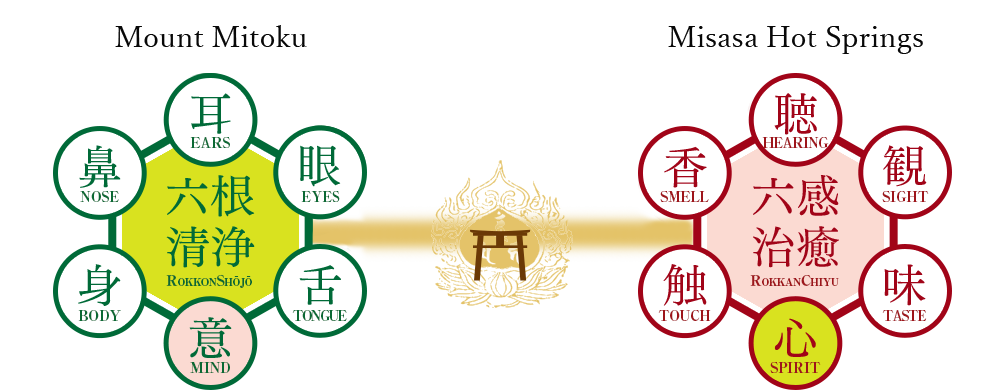
Purification of the Six Roots of Perception
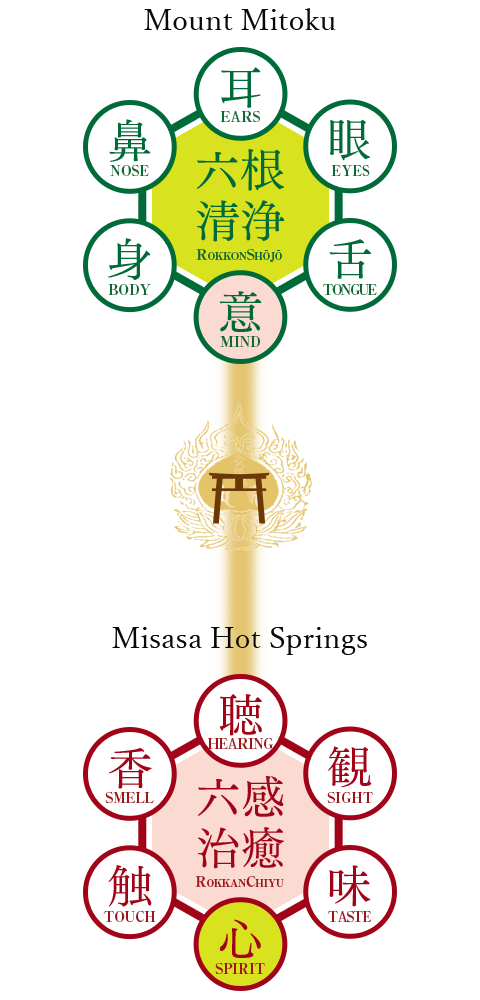
Healing of the Six Senses
- Hearing:
- The soothing sound of the mountain stream and wooden shoes.
- Sight:
- The Showa Era ambience of the townscape and the registered tangible cultural properties.
Relive your childhood with the Jinsho tug-of-war. - Taste:
- Experience the richness of food culture by eating local foods, such as mountain vegetables, tochimochi, and aged sake.
- Touch:
- Onsen therapy and experience Showa culture.
- Smell:
- Heal your heart with the scent of the water as you take a bath.
- Spirit:
- Refresh body and spirit with a modern hot spring cure.
Time axis
- 1泊目 三朝温泉 Healing of the Six Senses
- 2泊目 三徳山 Purification of the Six Roots of Perception
- 3泊目 三朝温泉 Healing of the Six Senses


